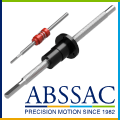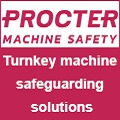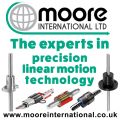
Posted to News on 26th Jun 2020, 09:58
Small electric motors
Can space limitations prevent small motors from delivering big power? Here, Dave Walsha of EMS Ltd shares his insights in achieving small yet powerful technology
Increasingly stringent efficiency regulations and progressively smaller electronic devices have driven the need for smaller motors. In fact, the world's smallest motor measures just one nanometre across. However, many modern engineering advancements require small motors that also have high torque and faster actuation times. Small motors are beneficial in industries where low weight is advantageous, such as in aircraft cabin equipment, and in applications where space is limited, for example in handheld medical devices. However, in these applications, size must not compromise performance - whether that's ensuring cabin seats return upright quickly before an aircraft lands or in a surgical tool that performs well with minimal effort required from its user.
Good things come in small packages
Precision is key in the medical industry, where every small movement matters during a procedure. The average surgery is said to last around two hours, but certain procedures such as heart bypasses can take many hours longer. Surgeons must stay alert and perform accurately without fatigue for these long periods of time. Small, lightweight and powerful motors make hand-held surgical tools easier to handle and control, easing strain on the surgeon while also performing quickly and accurately. These motors also benefit dentistry, by allowing the dentist to perform with supreme control and precision in tight oral spaces. Another area of the medical sector where these motors are beneficial is prosthetics, where they can power artificial fingers. The low weight of the motors makes the prosthetic more comfortable to wear, while the small size makes the prosthetic look closer to real human form. The high precision of the motors ensures the user can perform a range everyday tasks unassisted, such as having the ability to hold an egg carefully without breaking it or using force to push a door open.
Every little helps
In the aviation industry, each milligram of weight matters. It is claimed that a one per cent reduction in weight leads to an estimated 0.75 per cent reduction in fuel consumption. Aerospace engineers who choose small, lightweight and powerful motors to power interior cabin equipment can gain significant fuel savings. These points are even more valid in spacecraft, where is stated that each pound of spacecraft costs around 8,000 to launch into orbit. Another specific area where small, lightweight and powerful motors are vital is in space rovers. These must be as lightweight as possible to be successfully transported into space in the first place and must also possess high power to carry out investigative tasks in the conditions of space, including low pressure, highly variable temperatures and zero or low gravity. A space rover can have over 20 onboard cameras, and motors are crucial in driving these to obtain panoramic photographs of the environment. Rovers also require motors for the drills used to excavate space rock, as well as the arms that place samples into onboard storage.
Small but mighty
Back on Earth, small and powerful motors play a key role increasing factory efficiency. Manufacturers are under increasing pressure to produce more product in a shorter time frame. Facility managers who choose automated machinery and robots powered by small motors will increase efficiency and working capacity. In conveyer belts, micromotors are small enough to be completely encased within the conveyer, leaving only the belt exposed. This allows products to move along a smooth, clear surface without disruption that could cause damage. The more compact design of the conveyer saves space while increasing efficiency. Assembly machines must manufacture complex electronic products, such as printed circuit boards, quickly and on a mass scale. Design engineers who choose small and lightweight motors for assembly machines will allow the machines to move more quickly and take up less factory floor space. Robotic precision grippers are tasked with quickly and accurately manipulating small parts along the production line. Engineers who design these grippers with micromotors, rather than traditional compressed air, eliminate the need for complicated supportive infrastructure while maintaining speed and precision.
Sizing up your components
Design engineers must purposely design each motor component to achieve high power with small size and low weight. High-power magnets create a stronger magnetic field, which in turn increases torque. A high copper fill in the motor further increases torque by providing more conducting material and therefore a higher energy input. The bearing type used in a motor can have a large impact on size and power. Choosing the right bearing will also affect the amount of friction generated from moving parts and the resulting rotational speeds. Ball bearings in particular can reduce friction while withstanding high loads and have a small diameter. Ensuring all motor components are densely packed together within tight tolerances will further reduce motor size.
We ourselves supply a range of miniature brushed and brushless motors, with sizes ranging from 3mm to 44mm in diameter. The motor systems are modular, so engineers can choose from different components, such as motors and gearboxes, to form an optimised combination to suit power and space requirements. Furthermore, if standard options aren't suitable, we can provide a bespoke manufacturing service that enables production of a high-power actuation system to maximise the performance available from a specific space envelope. Whether it's speeding up surgical procedures, increasing factory efficiency or transporting space rovers to the moon, small technology is driving great engineering advancements. However, while size is important, so is power. Engineers can miniaturise products while improving performance by using small, high power motors "" helping innovation to continue from factory floor to outer space. (A matter of some gravity - Ed)
Learn more at www.ems-limited.co.uk.

































